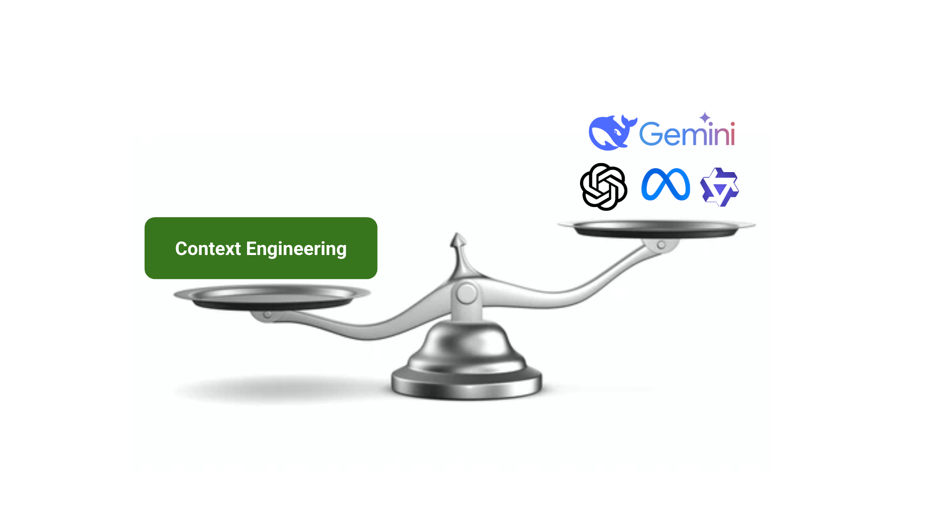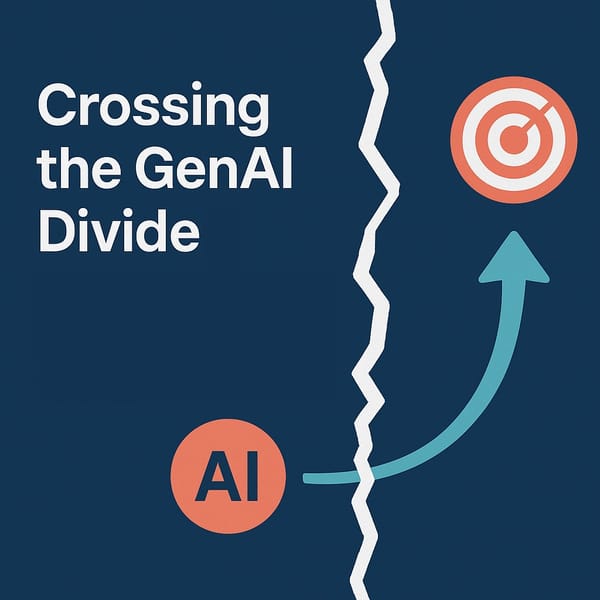Why Context Engineering Beats Choosing the Best LLM Model
Part 2 of our 3 part Context Engineering series. Discover why Context Engineering matters more than selecting the best LLM. Learn how structured context dramatically improves AI reliability.

So, you’ve read what Context Engineering is in Part 1 of our series. If you haven’t, you might want to jump over and read that first before diving into this.
If you're a business leader exploring AI for your workflows, chances are you've spent recent meetings, or way too many brain cycles, debating which LLM is best for your needs. OpenAI might still seem like the safest choice, but perhaps you don’t want to ship your sensitive data off-prem. Benchmarks shout that Llama is the new hero, yet Alibaba’s Qwen looks even better, and now DeepSeek is supposedly eating everyone's lunch. Confusing, isn’t it?
Here’s the TL;DR to save you some time: don’t sweat it.
In practical terms, the performance gaps between leading LLMs have narrowed significantly. Today, what truly makes the difference isn't choosing between OpenAI, Qwen, Llama, or DeepSeek—it’s about WHAT you tell your LLM to do, and more importantly, HOW you set it up to succeed. That’s where Context Engineering shines.
Quick refresher—what’s this series about?
- Part 1 – What is Context Engineering?
- Part 2 – Why Context Engineering matters more than your choice of LLM (this post)
- Part 3 – Build vs Buy: Implementing your Context Engineering layer
What job do you really want done?
Let's break this down with a practical example every business knows intimately:
“What are key highlights from our sales numbers for the last week?”
Sounds simple enough, right? But the actual workflow behind this simple request is packed with nuance.
Date Range
- Clearly defining "last week." Or it could even more ambiguous like "recently", "last fiscal year", or something very business specific like "latest new cohort cycle" etc.
Key Highlights Needed
- Total sales last week
- Weekly sales comparison to spot trends
- Identifying channels generating leads
- Understanding when leads entered your funnel
- Counting lead touchpoints
- Calculating conversion rates from last week
- Tracking conversion trends over several weeks
- Analyzing marketing and sales efforts impacting conversion rates
- Evaluating cohort conversion rates and trends
- Surfacing the highlights that are important for the user persona
Data Required
- New customers
- Leads information
- Lead scoring info
- Contact points
- Sales notes
- Marketing campaigns
- Marketing spend
- Traffic-to-lead metrics
- Funnel and drop-off rates
Memory Layer
- User persona details (role, preferences, previous interaction history)
- Follow-up questions from previous reviews
- Action items from past meetings
Expected Output
- Slide deck summarizing insights
- Slack message sharing key numbers ahead of the meeting
- Updated Weekly Business Review deck attached to the calendar invite
Clarifying Our Evaluation Setup
To clearly demonstrate the impact of Context Engineering, we defined two testing scenarios:
1. "With Context Engineering":
This means the LLM was supported by a carefully structured environment, including:
- Detailed System Instructions – Clear task definitions (e.g., date ranges, datasets, specific metrics)
- Historical Memory Layer – Context from past meetings and historical data
- Dataset Metadata – Structured descriptions of datasets (CRM, leads, campaigns)
- Few-shot Examples – Clearly formatted examples illustrating expected outputs
- Validation and Business Rules – Defined output logic ensuring accuracy and consistency. We went with simple json outputs that would feed into downstream agents to create the slide deck.
2. "Without Context Engineering":
In this scenario, the LLM had:
- A carefully crafted prompt with instructions, potential datasets and description of the data within these datasets.
- Description of the output format needed from the Models.
- No historical memory, few shot examples or post LLM validations
This reflects typical prompt engineering practices we've seen when sending this to powerful models in the hope for higher accuracy.
Additional Test Setup
To keep things true to real-world customer deployments, we opted for smaller models in these tests.. Based on our experience in production setups, these small models offer the best balance of cost, latency and accuracy.
- OpenAI's 4o-mini
- Qwen3 8B
- Llama 3.1 8B
- DeepSeek LLM 7B
Comparing LLM Performance - With and Without Context Engineering
We evaluated multiple aspects of context comprehension and dataset retrieval across 100 test cases designed to mimic realistic business complexity:
| Evaluation Criteria | With Context | Without Context |
|---|---|---|
| OpenAI | ||
| Accurate Date Recognition | 96% | 74% |
| Correct Dataset Retrieval | 92% | 70% |
| Handling Ambiguities (unclear terms, vague references) | 90% | 65% |
| Qwen | ||
| Accurate Date Recognition | 93% | 68% |
| Correct Dataset Retrieval | 90% | 62% |
| Handling Ambiguities | 88% | 60% |
| Llama | ||
| Accurate Date Recognition | 91% | 60% |
| Correct Dataset Retrieval | 87% | 56% |
| Handling Ambiguities | 85% | 52% |
| DeepSeek | ||
| Accurate Date Recognition | 90% | 59% |
| Correct Dataset Retrieval | 86% | 53% |
| Handling Ambiguities | 84% | 50% |
What’s the takeaway?
While it looks like OpenAI is the best model for the above tasks, you'll notice that the variation, when context is provided, is minimum. If we add additional prompt optimization for the specific LLMs, those numbers are likely to be higher and will match OpenAI's numbers.
Your real takeaway is this: Building a solid context layer matters far more than endlessly debating the model itself. With a well-engineered context system, even today's models (closed or open source) produce remarkably similar results. And these models are getting better with every new release.
Up Next: Build vs Buy
In Part 3, we’ll guide you through whether to build your own context infrastructure or leverage existing platforms (like ours at Agami), highlighting hidden costs and potential pitfalls.
Bonus Blog: Context Engineering vs Distillation vs Fine Tuning
We’ve been asked often: How should you decide between context engineering, distillation, or fine tuning when evaluating AI for a business problem? We have some strong opinions on this. In an upcoming bonus post, we’ll share our mental model to help you pick the right approach for your team and use case.
Want to see how Agami can help build the Context layer for your business? Book a demo →
Frequently Asked Questions (FAQ)
1. Why does context engineering matter more than choosing the best LLM?
Context engineering ensures consistent and accurate results by providing the LLM with structured, relevant context. As our tests demonstrate, a strong context layer significantly reduces performance gaps between different models.
2. What exactly is tested in your evaluation?
We tested LLMs on accurate date recognition, dataset retrieval, and resolving ambiguities — a small snapshot of typical challenges in real business scenarios.
3. What is meant by "handling ambiguities"?
Handling ambiguities refers to resolving unclear terms, vague references, or incomplete information by leveraging context and memory layers to produce accurate outputs.
4. Can smaller teams benefit from context engineering?
Absolutely. Context engineering isn’t just for enterprises. Smaller teams benefit equally by reducing output errors, improving reliability, and streamlining workflows.
5. What's the difference between context engineering and fine-tuning?
Context engineering dynamically structures context at runtime to improve immediate task performance without modifying the model. Fine-tuning permanently alters the model parameters through additional training, making it less flexible but more tailored.
6. How do I decide between context engineering, distillation, and fine-tuning?
This decision depends on your use case, budget, flexibility, and deployment constraints. We'll cover these considerations extensively in our upcoming bonus section.





